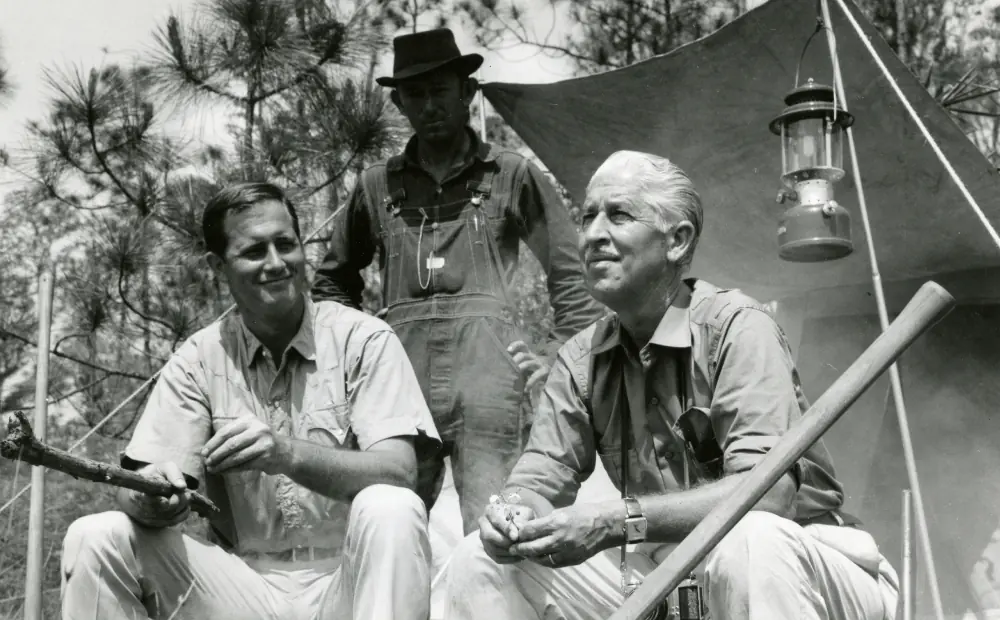Information provided by Woods Hole Oceanographic Institution (WHOI)
Did you know the ocean is the world’s largest ecosystem? Every oceanic species plays a part in maintaining this ecosystem’s biodiversity, including the North Atlantic right whale.
These whales help keep the marine ecosystem healthy and productive by redistributing nutrients across the ocean through their fecal matter. And even when they die, their carcasses sink to the bottom of the ocean where they serve as food for other organisms. It may sound gross, but this step is an important part of the maintaining a healthy ecosystem.
North Atlantic right whales are a critically endangered species, with approximately 340 on Earth and fewer than 70 reproductively active females. But there’s hope for this magnificent species with a right whale mom, Spindle, and her calf having recently been filmed in Cape Cod Bay, Massachusetts.
Scroll down to watch a video of Spindle and her calf.
Learn how organizations, such as Woods Hole Oceanographic Institution (WHOI) are tracking Spindle and working to conserve right whales.
Tracking Spindle, the North Atlantic right whale
With so few North Atlantic right whales remaining, each whale is tracked in a database managed by the New England Aquarium’s Anderson Cabot Center for Ocean Life. WHOI scientists contribute to the database through drone footage and other images taken under a research permit.
Characteristics of North Atlantic right whales
- North Atlantic right whales are primarily found within 50 miles of the east coast, from Florida to Canada, depending on the time of year.
- Every winter they travel more than 1,000 miles along the Atlantic coast. They head south to give birth and then travel back north to feed in northern waters, such as Cape Cod, before heading to the Gulf of St. Lawrence.
- Very few whales return with a calf in tow, making Spindle and her calf’s sighting in New England extremely special!
- Right whales can measure over 50 feet long and have distinct physical attributes, including callosities, large patches of raised tissue on their heads.
- Each whale has a unique callosity pattern, similar to human fingerprints, allowing scientists to differentiate between individual whales.
- Right whales also have an all-black tail with a deep notch in the middle.
- When they exhale, their two blowholes form a V-shaped blow.
Conserving North Atlantic right whales
North Atlantic right whales are a critically endangered species, protected under the Endangered Species Act and the Marine Mammal Protection Act, but serious threats abound.
Right whales migrate near the relatively shallow waters of the continental shelf and spend much of their time off densely populated areas of the east coast, making them vulnerable to human activities, such as vessel strikes, entanglement in fishing gear and noise pollution.
Right whale deaths continue to outpace births, so it’s important we take action now. Crucial efforts by the scientific community, fishing industry and policymakers are some of the steps needed to develop the most effective and viable solutions to ensure their long-term survival.
Scientists also hope to mitigate the threat of warming ocean temperatures. Warming oceans can affect food sources, which are moving and changing as climate change alters seawater temperature, winds and ocean currents. The shift in food availability impacts reproductive rates and changes where and when right whales frequent feeding grounds. This makes it difficult to accurately predict where North Atlantic right whales will be at certain times of the year.
WHOI, and other researchers from the U.S and Canada, are collaborating on reliable and affordable technologies including on-demand fishing technology — the ability to retrieve gear without running a line from the surface to the bottom — as a possible solution that could be both safe for the North Atlantic right whale and viable for the Atlantic fishing industry. Passive acoustic technologies can detect whales underwater in near real-time, transmitting data via satellite which is then reviewed by an analyst and posted on a publicly accessible website. Boaters encountering right whales along the east coast migratory routes from the Southeast through the mid-Atlantic and into New England must follow speed rules.
How you can help protect North Atlantic right whales
- As a boater, be aware of when whales are in their waters. Slow down to 10 knots or less to reduce the risk of a vessel strike. Even small, recreational boats can cause trauma.
- Support local fisherman and organizations working to change fishing practices and adopt whale safe gear.
- Even if you’re inland, remember all water leads to the ocean! Support the use of recyclable materials, such as water bottles and bags. Advocate for bans on single-use plastic bags and mylar balloons, which often end up in the ocean and create severe issues for all marine life.
- Tell your local, state and federal representative you support policies that protect right whales and support ocean conservation.
- Educate yourself on where your seafood comes from and what that fishery is doing to prevent whale entanglements and deaths.
- Stay educated. Learn more about WHOI’s work with right whales at whoi.edu. And, read WHOI’s special report, “Saving the North Atlantic Right Whale.”
For more reading about marine life and the ocean, check out “Sea Turtle Stranding Brings Organizations Together for Rescue” and “What is a Saltmarsh?”












